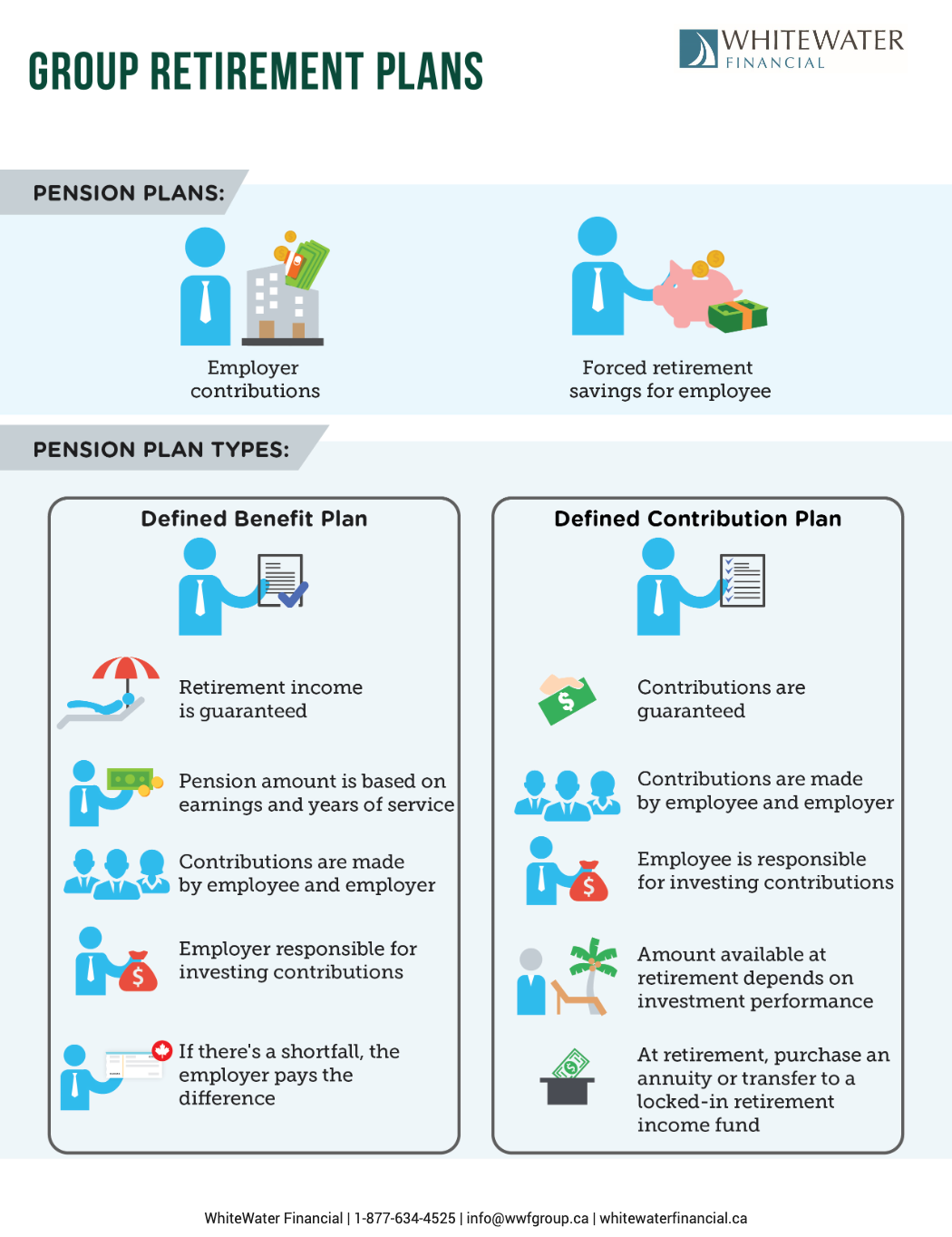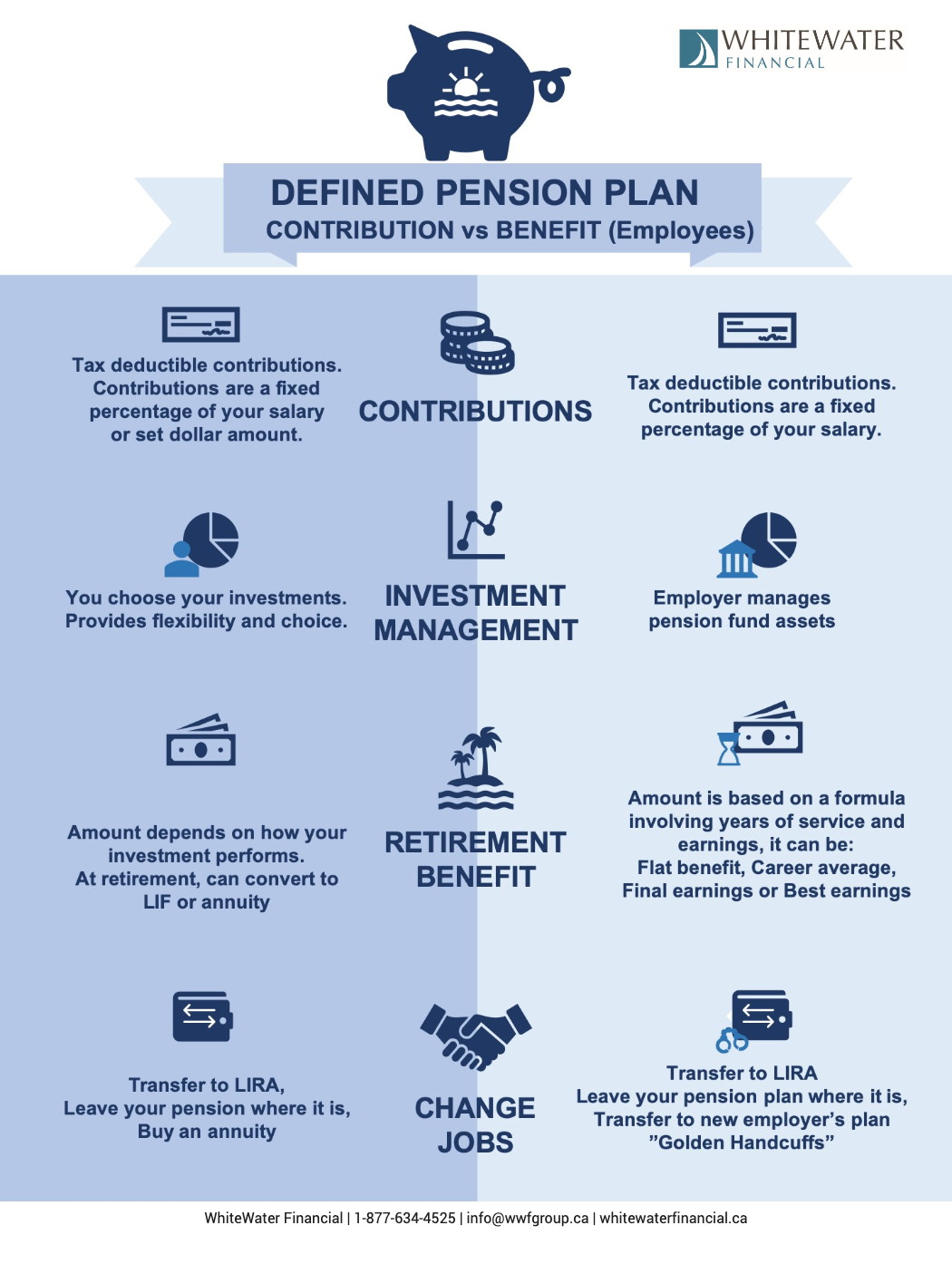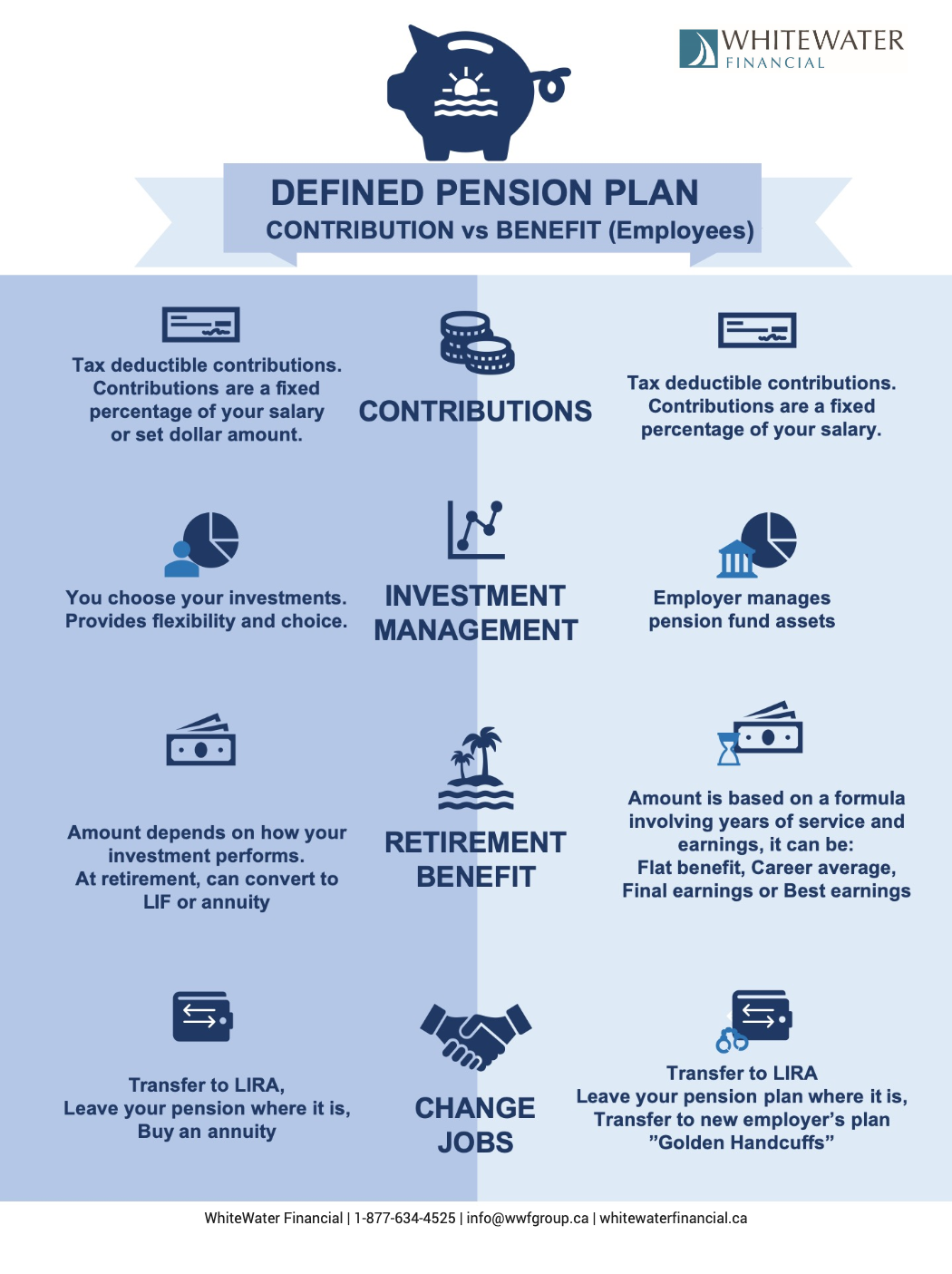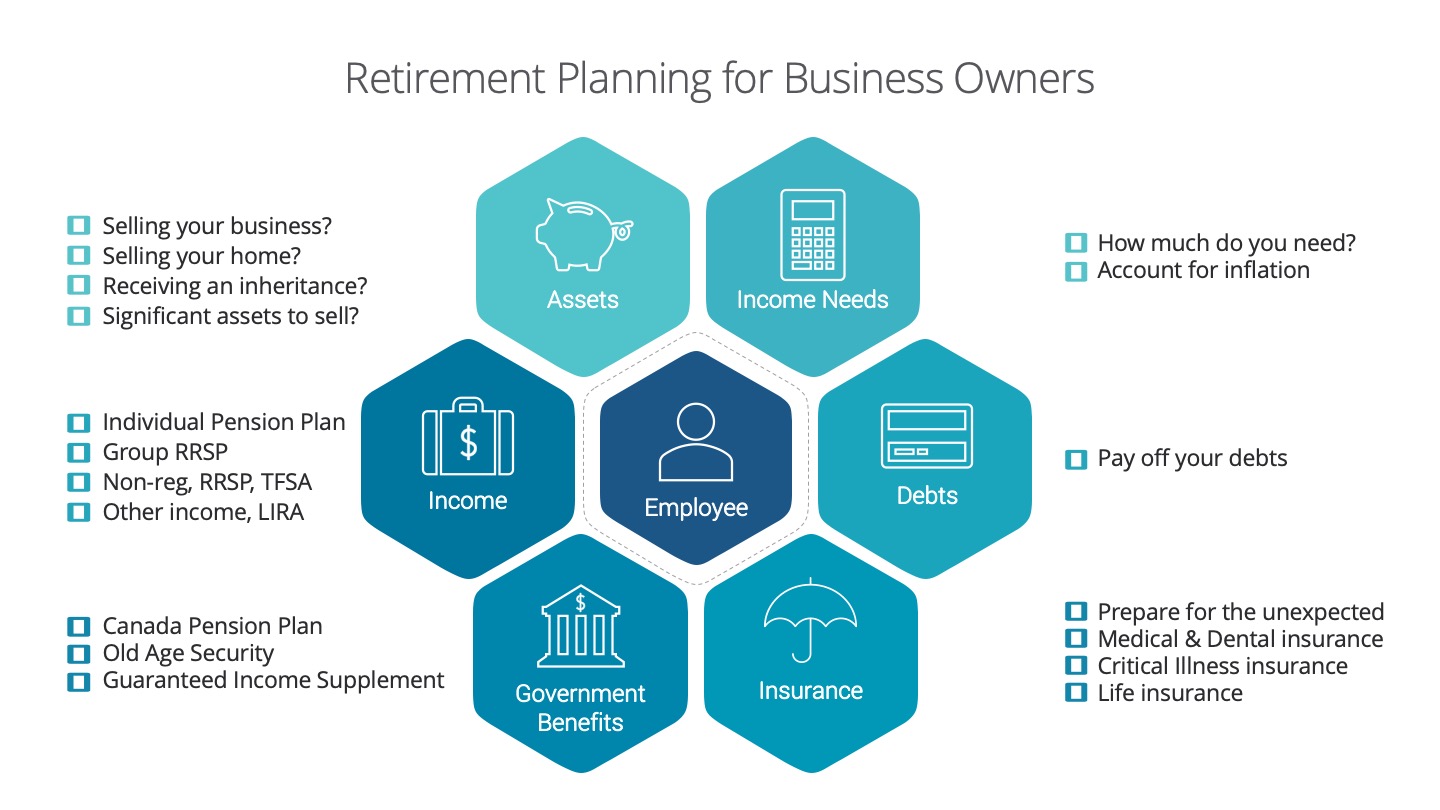
Working at an organization that offers a pension plan is one of the greatest financial advantages a Canadian can enjoy. Pension plans are designed to provide retirement income and help employees reach their retirement goals and for business owners- help retain key employees.
Pension plans can offer:
-
Employer contributions
-
Forced retirement savings for employee
There are 2 main types of pension plan:
-
Defined Benefit Plan
-
Defined Contribution Plan
Defined Benefit Plan
-
Retirement income is guaranteed, contributions are not.
-
The pension amount is based on a formula that includes the employee’s earnings and years of service with the employer
-
Usually, contributions are made by the employee and employer
-
The employer is responsible for investing the contributions to ensure there’s enough money to pay the future pensions for all plan members.
-
If there’s a shortfall, the employer pays the difference.
Defined Contribution Plan
-
Contributions are guaranteed, retirement income is not.
-
Usually, contributions are made by the employee and employer.
-
The employee is responsible for investing all contributions.
-
The amount available in retirement depends on how the investment performs including total contributions.
-
At retirement, the money in the account can be used to generate retirement income through purchasing an annuity or transferring the amount to a locked-in retirement income fund.
In summary, a defined benefits plan guarantees you a retirement income and a defined contribution plan guarantees contributions but not retirement income.
Talk to us, we can help.



